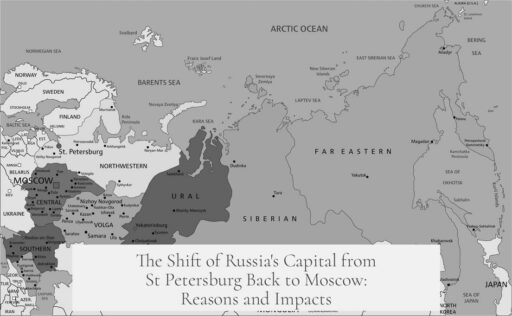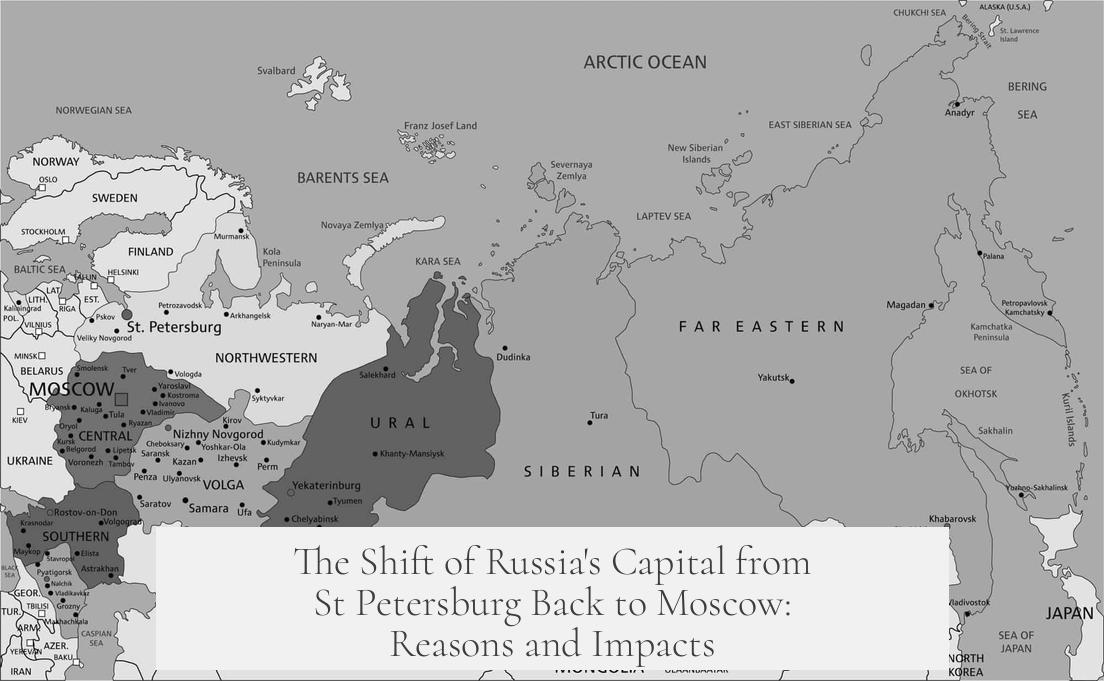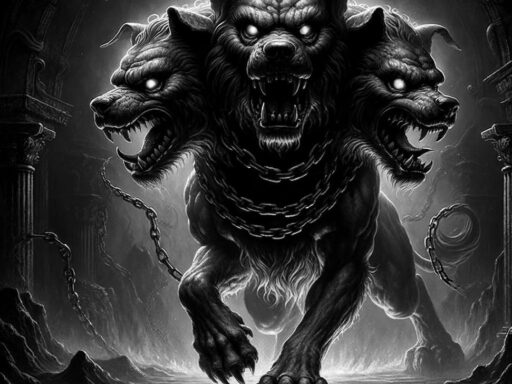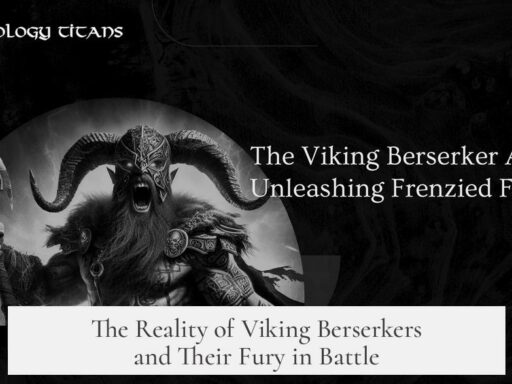The capital of Russia moved from St Petersburg back to Moscow due to political, security, and geographical reasons following the Russian Revolution. Initially, Peter the Great established St Petersburg in the early 18th century to modernize Russia, open a port to the Baltic Sea, and bring the nation closer to Europe. However, after the Bolsheviks took power in 1917, Moscow was chosen again as the capital to strengthen internal security and distance the government from vulnerable Western borders.
Moscow had served as Russia’s original capital before Peter the Great’s reign when the country was centered around the Grand Duchy of Moscow. Its relocation to St Petersburg symbolized Russia’s push for modernization and westernization. St Petersburg was strategically placed near the Baltic Sea, allowing Russia to engage in lucrative trade with Europe. This move aligned with Peter’s vision of transforming Russian society and governance to mirror Western European powers.
After the 1917 revolution, the new Soviet leadership faced threats from anti-communist forces both domestic and foreign. St Petersburg’s geographic position became a liability. The city sat approximately 30 kilometers from Finland and 100 kilometers from Estonia—border regions that were susceptible to foreign invasion, particularly from advancing German troops during World War I. In contrast, Moscow sat more securely inland, away from direct European borders, making it a safer location to govern from during turbulent times.
- Political loyalty also played a role. Moscow residents were generally more supportive of Bolshevik rule compared to the more European-facing St Petersburg populace.
- Security from possible external attacks was paramount given the ongoing civil conflict and unstable European relations.
- St Petersburg, facing military threats and political instability, lost its status and influence temporarily after the capital moved.
The shift to Moscow marked not only a strategic retreat but also a reaffirmation of Russian heritage, reverting to its historical center. After World War II, efforts focused on restoring St Petersburg culturally and economically. Nevertheless, the government remained permanently in Moscow, reaffirming its status as Russia’s power heart.
For detailed cultural context, Solomon Volkov’s St Petersburg: A Cultural History offers insights, though it is noted for an anti-Soviet perspective.
- Moscow was Russia’s original capital before St Petersburg.
- Peter the Great moved the capital to St Petersburg to modernize Russia and open a Baltic port.
- After the revolution, security risks and European proximity made St Petersburg vulnerable.
- Moscow’s location was safer and politically more loyal to the Bolsheviks.
- The capital stayed in Moscow permanently after World War II, with St Petersburg undergoing cultural regeneration.
Why did the capital of Russia move from St Petersburg to Moscow?
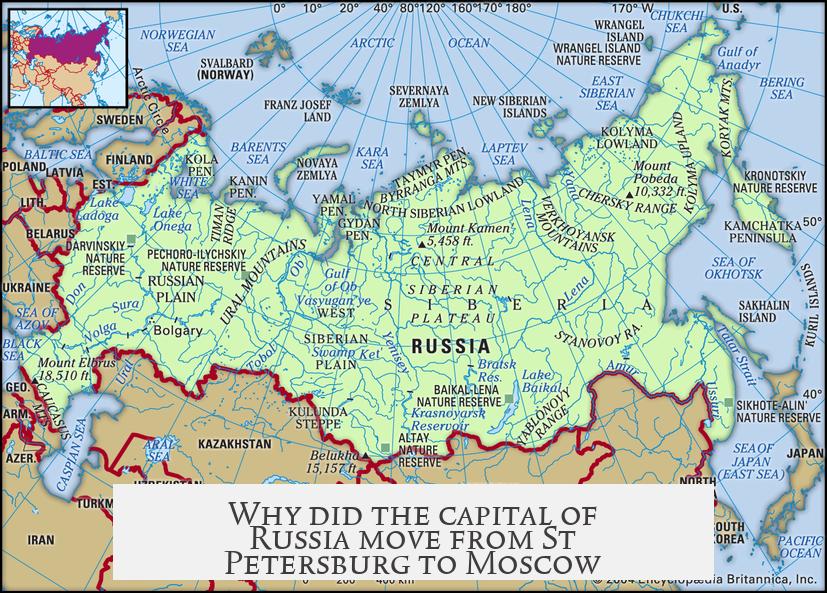
The capital of Russia shifted from St Petersburg back to Moscow primarily due to political, security, and historical reasons following the Russian Revolution. But let’s unpack this fascinating story, because it’s not just about flags waving in different cities; it’s about Russia’s identity, defense, and strategy woven into the fabric of its capital choice.
Imagine Russia in the early 18th century. It’s like a giant stretching its limbs. St Petersburg, born from a land wrested off Sweden, wasn’t just a charming city with beautiful canals. It was Peter the Great’s *blueprint* for modern Russia—European-style, bustling with trade, and ready to shake off a medieval image. But why did this bold experiment eventually fall out of favor?
The Original Capital: Moscow
It’s often forgotten that Moscow was Russia’s original heart. From the Grand Duchy of Moscow, the center of power grew. Ivan the Terrible crowned the Russian Empire in the 16th century right there. So, Moscow wasn’t some random backup plan; it was the *old faithful*, the city steeped in Russia’s cultural and political roots.
Why Peter the Great Chose St Petersburg
- Strategic Location: St Petersburg sits on the Baltic Sea, newly seized from Sweden. This port was a gateway to European trade—a massive economic opportunity.
- Westernization Project: Peter the Great famously wanted to “bring Russia kicking and screaming into the 18th century.” The city was a statement. Its European architecture and layout were a billboard announcing Russia’s new direction.
Think of St Petersburg as Russia’s bold teenager trying to make friends with Europe while still sorting out its own identity.
So, Why the Return to Moscow After the Revolution?
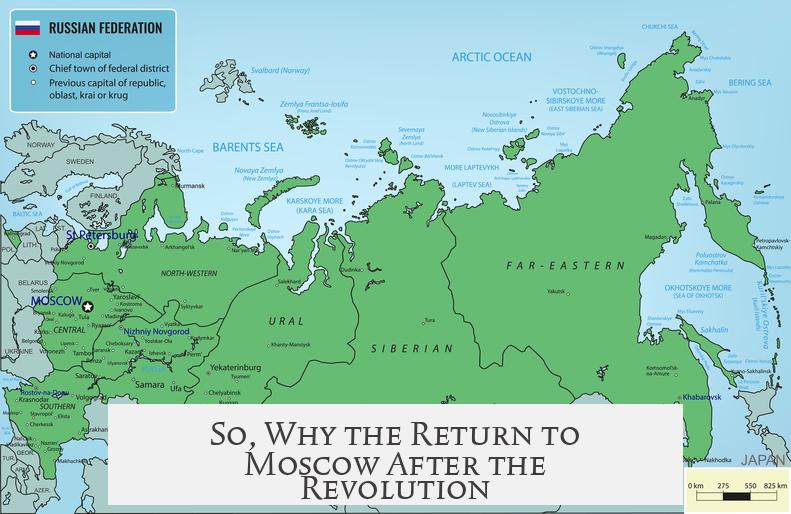
Fast forward to the early 20th century. The Russian Revolution disrupted everything. Suddenly, Russian leadership felt uneasy about the flashy, coastal St Petersburg—then called Petrograd and later Leningrad.
- Political Distance from Europe: The new Soviet government wanted to break away from European influences symbolized by St Petersburg.
- Security Concerns: St Petersburg was perilously close to hostile borders—just 30 km from Finland, 100 km from Estonia, and under threat from German forces during WWI and Civil War years. Not exactly a fortress for a vulnerable new regime.
- Moscow’s Historic Loyalty: Moscow had a history of loyalty to the Bolsheviks and was farther inland, safer from invasions and attacks.
- Geographical Defense: Moscow’s location offered natural protection, making it easier to defend compared to the exposed St Petersburg.
In short, Moscow felt like the fortress the fledgling Soviet Union desperately needed. St Petersburg was too close to the West, too vulnerable, and too tied to the Russia of old and foreign influence.
What Happened to St Petersburg After It Was No Longer the Capital?
The city didn’t just fade into the background.
- Decline During the Early Soviet Era: St Petersburg suffered. Its importance diminished, reflecting political and military realities rather than its cultural legacy.
- Post-War Regeneration: After WWII, the government invested in restoring St Petersburg’s grandeur. The siege had ravaged it, but its spirit endured.
- Moscow’s Firm Grip: Meanwhile, Moscow cemented itself as the undisputed capital of Russia—politically, administratively, and symbolically.
Why Does This Matter Today?
The move tells us a lot about how capitals reflect a country’s priorities. Capitals aren’t just bureaucratic hubs—they’re symbols and strategic assets. Want to see a country’s focus? Look where it plants its capital.
Russia’s switch back to Moscow highlights how strategic defense and political control trumped economic access and western aspirations at a crucial historical moment.
Final Thoughts: Capital Moves and National Identity
Choosing a capital is like choosing a face to present to the world. Peter the Great gave Russia a European face with St Petersburg. The Bolsheviks pulled back to Moscow, the ancient heart, for protection and political loyalty.
One can almost hear Peter the Great grumbling, “But I wanted to drag Russia into the modern age!” and Lenin replying, “Yes, but first we need to survive.”
Want to dive deeper into St Petersburg’s rich cultural and political story? Solomon Volkov’s St Petersburg: A Cultural History gives an intriguing account—though with some anti-Soviet bias, so take with a pinch of salt.
How often do you think about the location of a capital city? It’s easy to forget such moves shape not just governance but a nation’s soul.
